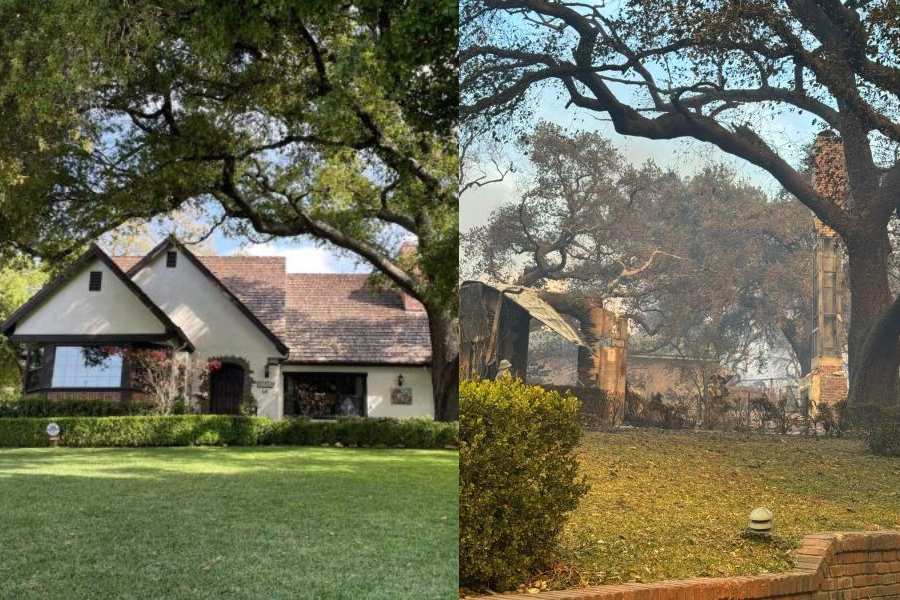The Darjeeling cinchona plantation, which has been tottering for years because of lack of demand and absence of patronage from the government, is back in the spotlight following US President Donald Trump’s call to Prime Minister Narendra Modi for anti-malaria drug hydroxychloroquine.
Quinine, the world’s first-known anti-malaria drug, is derived from the barks of the cinchona. The plant is currently grown only in Darjeeling where the cultivation began in 1862.
Trump has asked for hydroxychloroquine’s export from India after some health experts included its medication to treat Covid-19 patients.
“At the start, let us be clear. The US president has not asked for quinine. Although hydroxychloroquine is a derivative of quinine, neither quinine nor cinchona barks are needed to produce hydroxychloroquine which is manufactured chemically,” Samuel Rai, director, Directorate of Cinchona and other Medicinal Plant, told The Telegraph.
But everyone associated with the directorate is hopeful that the spotlight on the synthetic anti-malaria drug can turn the fortunes of the neglected plantation. “With the US President talking about anti-malaria drug, there is a hope that the plantation will find some relevance; it might attract new research and policy makers might suddenly remember that there is a cinchona plantation in the hills,” said a retired official of the directorate.
“Proper research on this anti-malaria plant has not taken place,” he rued, referring to the apathy towards the largest public sector undertaking in the hills.
The plantation — spread over 26,000 hectares at Mungpoo (set up in 1862), Munsong (1900), Rongo (1938) and Latpanchar (1943) — incurs an annual loss of more than Rs 25 crore. Four factories to manufacture quinine and emetine at Mungpoo and diosgenin and 16-DPA at Gairbas are currently closed.
Quinine is produced from cinchona barks, while emetine is derived from ipecac. Diosgenin and 16-DPA are derived from another medicinal plant dioscorea.
“The fact that none of the factories are operational speaks volume about lack of government focus on this industry,” said a retired employee.
Sources said century-old quinine factory and even the three relatively new factories did not adhere to various provisions of good manufacturing practice guidelines and need an overhaul.
The British had experimented with the anti-malaria drug project across India. “It was successful only in Ooty and Darjeeling. The Tamil Nadu plantation was shut some decades ago,” said director Rai.
At the moment, cinchona is grown over an area of about 6,900 acres in the hills, while the rest of the land is used for various other medicinal plants like dioscorea, ipecac and other crops like rubber and cardamom.
“We have 500 metric tons of dry cinchona barks valued at around Rs 5.5 crore,” said Rai.
Since the outbreak of Covid-19, the plantation directorate did receive two enquires regarding the cinchona. “One was from Uttar Pradesh and the other from Madhya Pradesh. The quantity was less, for around 200kg and was probably not meant for mass scale use,” said Rai.
The once thriving industry is in such a state that the last major sale of cinchona barks was in 2016. Then, 790 metric tons were sold. The plantation employs around 6,000 workers and provides indirect sustenance to 40,000 hill people.
While many believe the Darjeeling plantation has lost its sheen because synthetic drugs are cheaper to produce, a section also blames the poor work culture for the sector’s decline.
“None of the other cash crops is generating enough revenue. Work culture, too, has to improve,” said a retired official.
“Poor work culture and lack of proper research and development activities, aggressive marketing and proper linkages affected the plantation,” said another former employee. “The potential of quinine is there. Apart from anti-malaria drugs, it is also used in preparing tonic water.”










